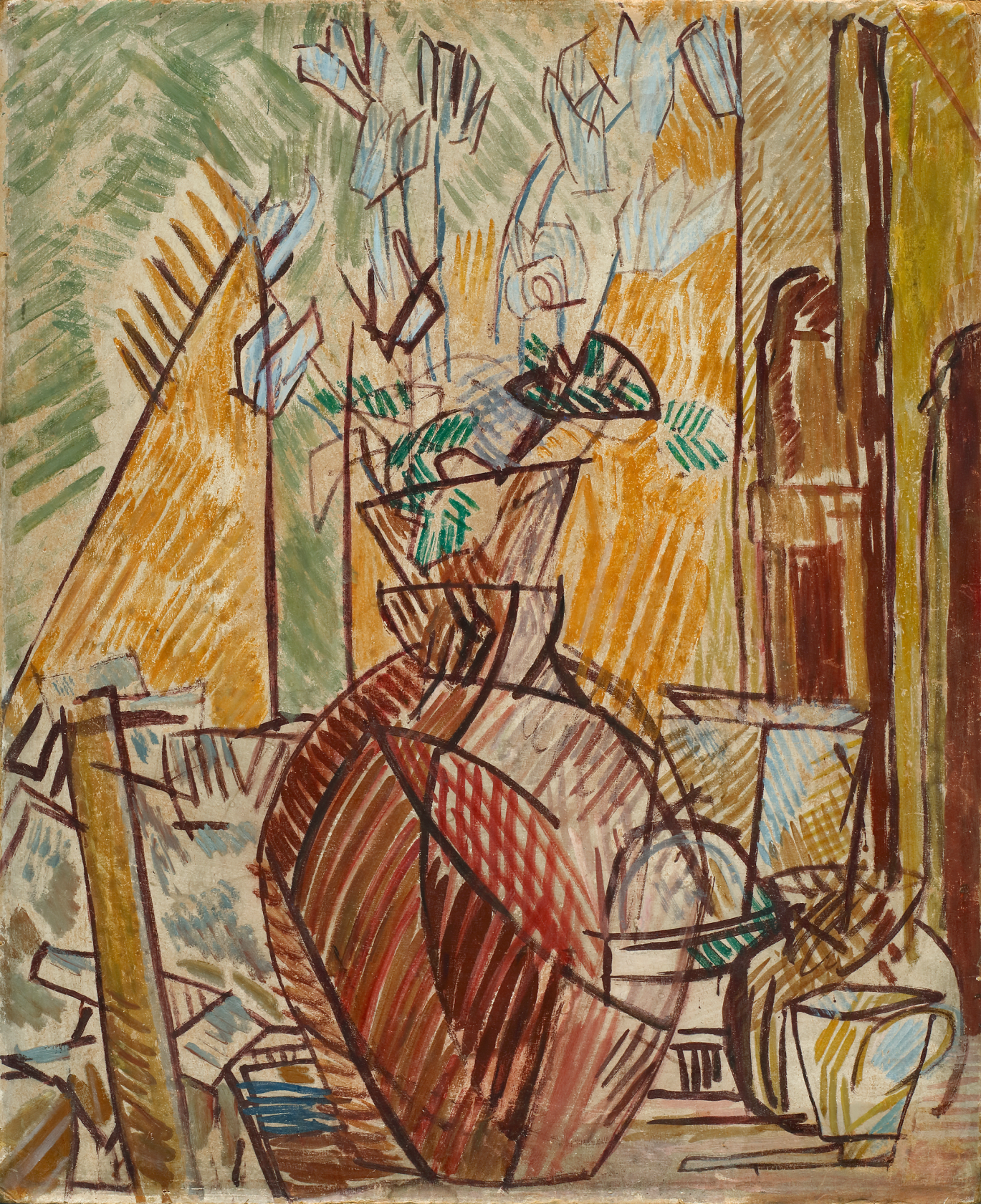Enquire
This ambitious work was painted by Duncan Grant in 1913, the same year he co-founded the Omega Workshops.
During the lead up to an exhibition at the Galeries Barbazanges in Paris in 1912, Roger Fry singled out Duncan Grant in a letter to the dealer and poet Charles Vildrac: ‘Duncan Grant will exhibit and certainly he has genius… the others like myself have but a little talent and at least goodwill.’
Grant’s work at this date made a considerable impact on Fry and other admirers of international modern art of the period and his inclusion in Fry’s Second Post-Impressionist Exhibition at the Grafton Gallery held between October and December later that year was a given. That exhibition would be the first to showcase work by British avant-garde artists (including work by Grant, Eric Gill, Wyndham Lewis and Fry himself) alongside great established and emerging names of European art amongst them Cézanne, Matisse, Picasso and Braque.
As well...
During the lead up to an exhibition at the Galeries Barbazanges in Paris in 1912, Roger Fry singled out Duncan Grant in a letter to the dealer and poet Charles Vildrac: ‘Duncan Grant will exhibit and certainly he has genius… the others like myself have but a little talent and at least goodwill.’
Grant’s work at this date made a considerable impact on Fry and other admirers of international modern art of the period and his inclusion in Fry’s Second Post-Impressionist Exhibition at the Grafton Gallery held between October and December later that year was a given. That exhibition would be the first to showcase work by British avant-garde artists (including work by Grant, Eric Gill, Wyndham Lewis and Fry himself) alongside great established and emerging names of European art amongst them Cézanne, Matisse, Picasso and Braque.
As well...
This ambitious work was painted by Duncan Grant in 1913, the same year he co-founded the Omega Workshops. During the lead up to an exhibition at the Galeries Barbazanges in Paris in 1912, Roger Fry singled out Duncan Grant in a letter to the dealer and poet Charles Vildrac: ‘Duncan Grant will exhibit and certainly he has genius… the others like myself have but a little talent and at least goodwill.’ Grant’s work at this date made a considerable impact on Fry and other admirers of international modern art of the period and his inclusion in Fry’s Second Post-Impressionist Exhibition at the Grafton Gallery held between October and December later that year was a given. That exhibition would be the first to showcase work by British avant-garde artists (including work by Grant, Eric Gill, Wyndham Lewis and Fry himself) alongside great established and emerging names of European art amongst them Cézanne, Matisse, Picasso and Braque. As well as submitting work for the show, Grant also designed its poster – an image incorporating the kind of geometric pattern and simplification of form seen in his work for the Omega Workshops. Also from this show, and consistent with the style he would develop at Omega, Grant would take some influence from Picasso’s ‘primitive’ pre-cubist work (although it is notable that Grant had first encountered Picasso as a student in Paris back in 1907). This is evident in works like The Tub from c.1913 (Tate) which employs a form of vigorous, crude, cross hatching that is also seen in Picasso’s work in this style. Cyclamens displays much of the same distinctive characteristics and was probably executed in the same year. Frances Spalding (op. cit., ch.10) writes of a work with the same title ‘…Cyclamens had been rendered entirely in terms of hatching, under the influence of Picasso’s Nude with Drapery (1907), which Duncan had seen in Gertrude Stein’s collection’. Richard Shone (letter to John Constable, 26th July 1983) has confirmed that the present work was exhibited at the Second Grafton Group exhibition early in 1914 where it was acquired by Roger Fry’s sister Margaret. It was also considered to be of sufficient importance to be included at a later date in a retrospective exhibition (currently untraced) at the London Artists’ Association (where Grant was a member between 1929 and 1931). In the same letter Shone also acknowledges the existence of a second version of Cyclamens painted in the same year. That work was with Anthony d'Offay in 1983. |








